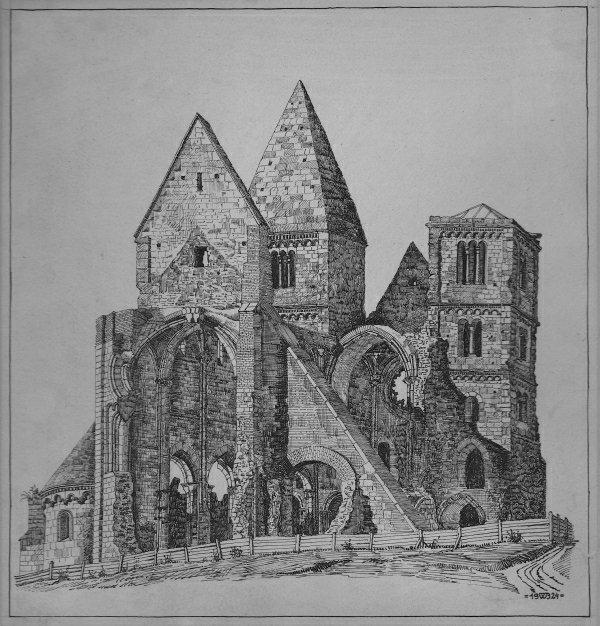Architectural History Education
Anniversaries of the Architectural History Education
Architecture has a peculiar continuous presence, a sensuous material quality which is irreplaceable.
It needs space, and time is also important.
The physical and mental environment matters.
However, architecture is not made by architects, against every kind of belief.
They are primarily media ŌĆ×obsessedly walking their way on the border of memory and fantasy, from the material here and back.ŌĆØ, to quote G├Ībor U. Nagy. ŌĆ×People come and go in the world; take possession of a parcel of it, settle down and make themselves at homeŌĆØ, says Martin Heidegger.
Only then do we start building, as we need and wish to do.
Every individual, family, group, town and country constructs. Everyone. Of course primarily they wish to construct themselves. Their lives.
Architecture as such ŌĆō per definitionem ŌĆō can only be a contemporary one thrust into time, with a risk no less than what kind of spatial form and frame we can give our life. Actually, not much is needed as the life of every immortal human being is finite, even if we are occasionally fascinated by the magic of infinite space and time.
However, there is now a bizarre change of roles taking place around us. The realities of life (e.g. walls) are virtualized, whilst ideas are embodied more often and in a more radical manner. We are living among the scenes of our own utopias. Melancholy and longing tend to possess our hearts, and the perception of reality lose keenness.
Instead of borrowing live prototypes it is now an undiscriminating consummation of models and examples going on.
But how is it with realiy?
Imre Kert├®sz wrote about the ŌĆ×functional human beingŌĆØ in G├Īlyanapl├│ that ŌĆ×alas, the alienated functional human being is not the hero of the period, but he is selected, if his choice is also resignation: actually s/he resigned from a reality, from existence. This way individuals do not live their own realities, only their funcions, without a life of their own.ŌĆØ
And the conclusion is even more serious: ŌĆ×ŌĆ”.Functional lives without reality are not suitable, they cannot be transformed into artistic material, as instead of the chance of tragedy it is nothingness that glitters throughout their fateŌĆ”ŌĆØ
Let us step even further back, to the perception of reality.
How did it all start?
Yes, everything starts with Mother, her skin and touch.
And the first words, voices, sentences.
Being attracted by a crack on the wall or a puddle with unbelievable force.
Writing with a thick red pen on lined newspaper beautiful numbers in endless rows: 2s with wavy tails.
Later on Sin and Punishment, burning doubts and identification.
Touch, speech, writing and reading.
Culture. Getting to know the world.
A newborn baby takes the world in his or her mouth.
Then there are smells. Nice and foul ones.
I keep remembering the smell of the kitchen, the kindergarten, the attic, the cellar and my great-grandmother.
Later on the world of images, colours, figures, secret signs.
Compared to this, writing is a military camp, but the freedom of reading and that of books will compensate.
Developes inner hearing.
Hand, mouth, nose, eye, ear.
It is food for thought. Walking the way of recognition, getting to know the world gaining experiences to enrich the existing ones ŌĆō almost including them, whereas we are continuously and irrevocably getting farther from the paradise of the senses.
Getting civilized.
Let us expand the circle in the world of senses.
Caress from someone, touching door handles and keyboards.
The tangibleness of things, taking them in our mouths.
Food, cutlery, musical instruments. Bubble gum and gew-jaw.
People, objects, the kip├Īrolg├Īsa, odour and smell of things.
The breath of a smoker, the odor of rain, the smell of dust.
The reality of images, and the image of realiy. Change of place.
Manipulating vision. The new image of vision. A terror of images.
A vanishing realiy.
Inner hearing and imaginaion.
Harmonies and rhythms, compositions.
Mathematics and music. Drugs.
Hand, mouth, nose, eye, ear.
All this is realized in the mind, in the endless maze of the brains and nerve tracks, playing on the chords of the soul.
In a more complex and rich manner, but with the intensive bleaching of the senses.
Reflections as experiments allure further on.
Body language, language, writing, book.
Europe.
Ancient times, early civilizations, empires, globalism.
Tribal nations, the early Greeks, late Rome, modern Europe.
Or in the language of architecture: yurt, megaron, Pantheon, Reims, Borromini, the chapel of Zumthor Bruder Klaus.
Always the same and yet a bit differently, technically and intellectually containing the knowledge and experiences of our predecessors, and yet distancing ourselves from the primal unity of function and form.
The sensual recognition of entities and the world, taking possession of it, which happens in the one-time lifetime, and what is even more: at a slowing pace. We have the impression that everything has already happened ŌĆō in the first, in the first three or in the first eighteen years.
The best minds of Europe have dealt with the secret of time, trying to humanize it from mediaeval monks through philosophers of the modern times to contemporary sportsmen. And it is more than just an interesting fact that time tamed and made liveable by St Augustine and Heidegger is made perceptible, experiencable and human by man-made spaces.
All our knowledge concerning this is is stored in our minds from the primal hut through the Gothic cathedral to railway stations and skyscrapers, The task set for us is the same as it was ten, a hundred or a thousand years ago: to internalize time by means of architecture, spatial perception and recognition.
To create the spaial work of our lifetime.
J├Īnos Golda
A speech delivered in N&n gallery on the opening of the exhibition titled ŌĆ×20 years of Design-Training at the Departmen of Architectural History and Monuments of BME, on April 14th, 2010.

